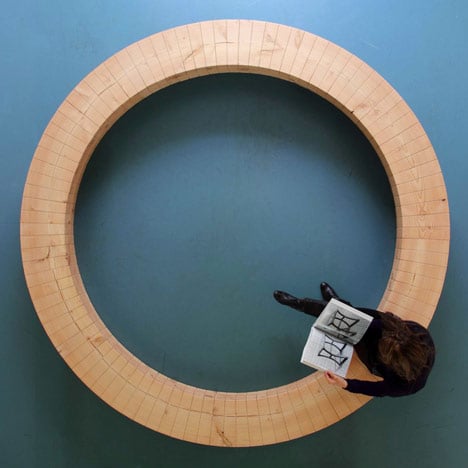
Shared Space III by Chris Kabel
Dutch designer Chris Kabel has created a circular bench made from one 10 metre-long wooden beam.
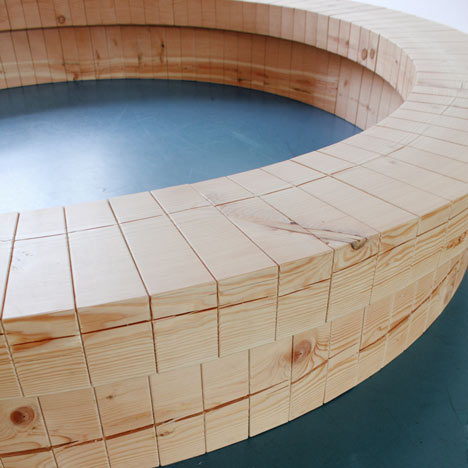
Kabel cut the long beam into trapezium-shaped pieces then fitted them back together to form a ring that retains the grain of the wood.
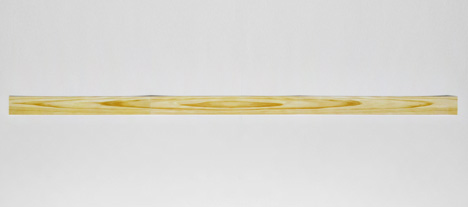
These pieces are held in place by a metal strap.
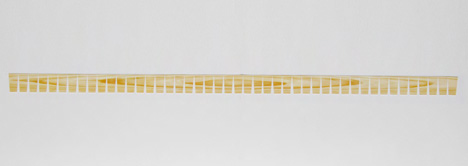
The bench is in use for an installation called Shared Space III in the communal space of the Witte de With Center for Contemporary Art and Tent in Rotterdam.
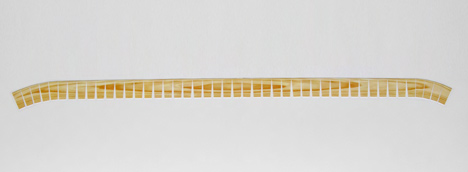
Here's some more information from the designer:
What do you like most about the project?
That the bench really works. If you sit with three people or more in it, it automatically becomes a very intimate space where the outside world dissapears. You really feel embraced by the tree.
What was the original concept and how does it differ from the finished project?
For the Shared Space III I wanted to make a circular bench. I liked this shape because it creates two very different spaces. Facing outward of the circle you can be alone and anonymous. You can read a book or look at the passers by. But as soon as you step into the circle you become part of the atmosphere created by the people that are already in there. It’s a bit like sharing a bath in the sauna but then without the nakedness and the wetness… It also reminds me of my early school years where on mondays we would all sit with our little wooden chairs in a circle and talk about the things we did in the weekend.
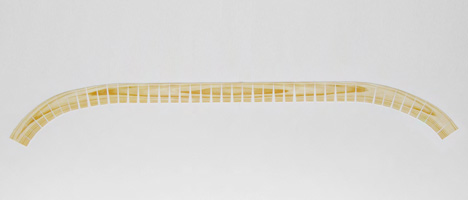
And then I thought of how I would make it. Obviously, wood first came to mind but I wanted to do something unexpected with the wood. Normally to make a circular bench out of something straight, you cut it in shape and glue or screw it back together. This however destroys the continuity of the wood grain, which for me is the most characteristic feature of wood. So that gave me the idea of cutting the wood in small trapezium shaped pie pieces that, when put back togheter, would create a circle of three meters in diameter. The bench consists of a hundred of those pieces, held together by a metal strap (just like a wooden bathtub or a wooden barrel). It actually works in the same way as the stones in an arch in a wall. Another good thing is that you can disasemble the bench, load it on a pallet and tranport it very easily.
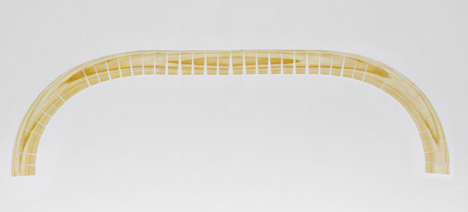
Did you have any difficulties during the design process or assembly?
Yes, it was very hard to find a piece of wood of this dimensions. To be true to the idea I really needed a wood beam of ten meters long. Also it needed to be dry enough to cut without cracking open or breaking too much. Because when wood is freshly cut it is very wet and when it starts to dry out, the outside dries out quicker than the inside and shrinks and thus cracks because the inside didn’t shrink yet. Luckily I found this kind of wood and also a fantastic woodworker who works a bit like a mad scientist, he invents his own machines and techniques. He is a specialist in impossible projects. He has also worked for the Chinese artist Ai Wei Wei, Ettore Sottsas and Ron Arad, which made me feel confident he knew what level of finish I desired.
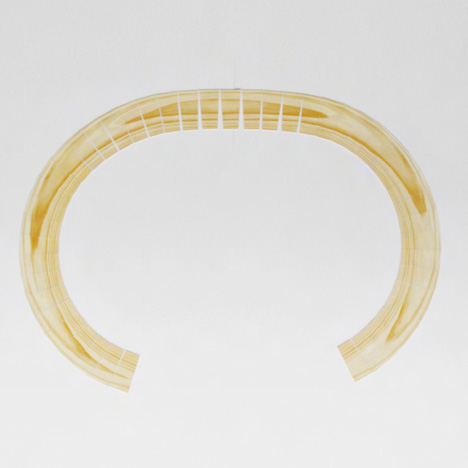
Do you have any anecdotes/ funny stories that occurred during the design process?
First I wanted to make the bench in my own workshop out of a thinner but also 10m long wood plank attached to a metal frame, and with the wood pieces cut by waterjet and glued together completely in one piece. We almost started doing this when I realised myself the immense size this bench would have and how we would transport it. So I measured the doors of the building and found out that after being finished, the bench would never leave the building because the doors were too small. After this desillusion the answer to make the entire bench out of pieces cut one much wider and higher wood beam and later strapped together by a metal strap, proved much more natural and logical… So in the end I thank the architect of our building (which used to be a hat factory by the way, items that easily fit through any door) for not making the doors too big…
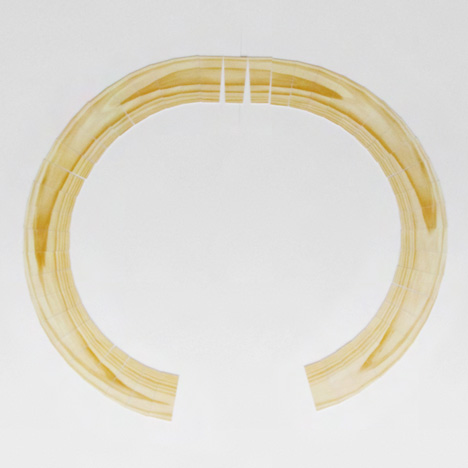
What would you like people to take away after seeing this project?
I hope that they will have shared something with a complete stranger in this wooden circle.
About the project itself:
What materials and techniques did you use?
Oregon pine beam of 10m/ 40cm /30cm, a little geometry, and a lot of cutting… the wood is finished with a matte transparent varnish

Where were the materials found?
The wood originally comes from Canada, where it has been lying in the river for a year to wash out the wood acids. Then it has been drying to the air for two years in the Netherlands.
How long will the space be occupied by your design?
A year or maybe longer
What do you expect the bench to look like after 6 months- a year?
The wood will become even better with age so I hope it will last a hundred times longer than that…
See also:
.
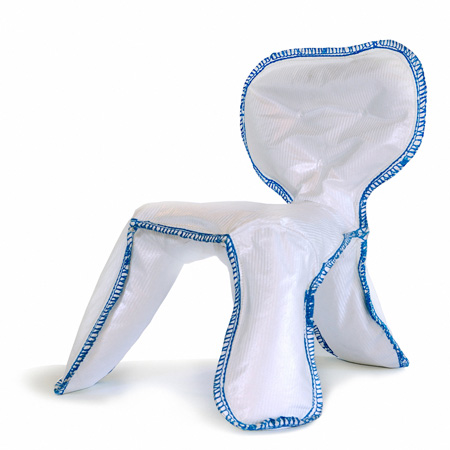 |
 |
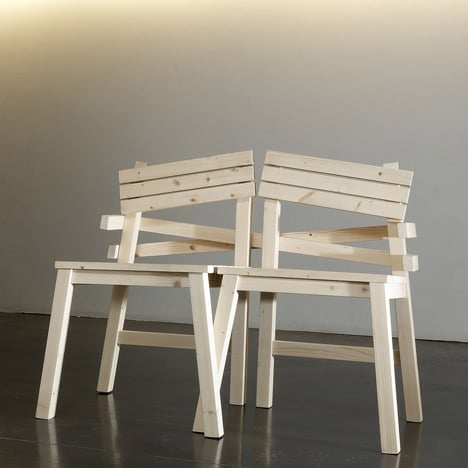 |
| Seam Chair and Bench by Chris Kabel |
New work by Chris Kabel |
More furniture stories on Dezeen |